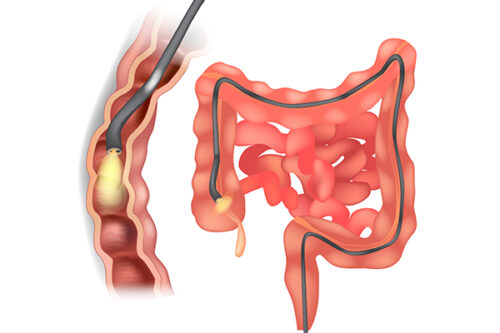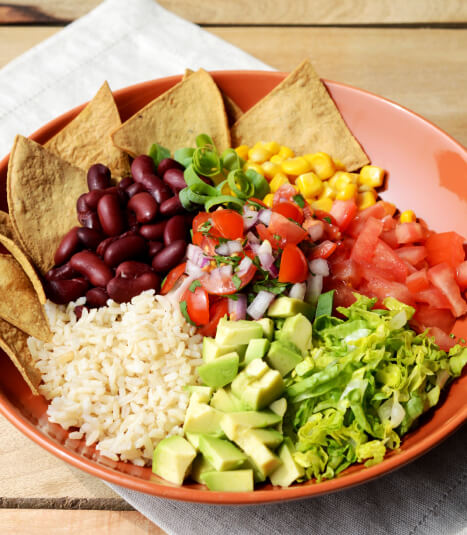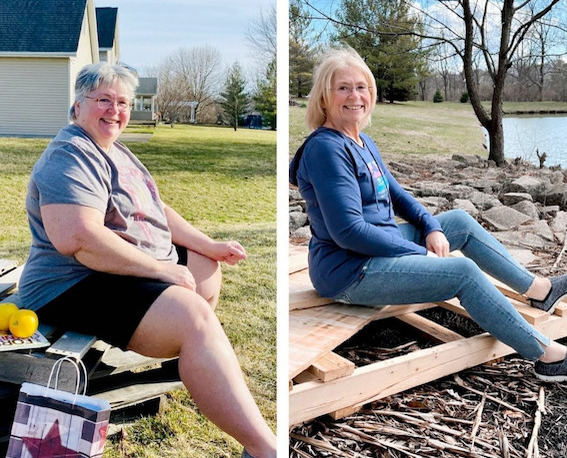A Starch-based Diet Supports Spontaneous Healing: Atherosclerosis, Arthritis, and Sometimes Cancer

“I (Robert Cross, attorney from Sacramento, California) had a follow-up radioactive heart scan done today, May 5, 2009, and an appointment with the cardiologist immediately afterwards to discuss the results. My last such test had been in January of 2008. That one had shown a large region of mild-to-moderate perfusion deficit extending along the inferior and lateral walls of my heart. I had experienced chest pain early on in the treadmill portion of this test, and had had difficulty getting to the 85% of predicted maximum heart rate for my age of 62. My doctor had recommended medication, an angiogram, and heart surgery (an angioplasty). I was scared. I immediately went on the low-fat, starch-based diet.
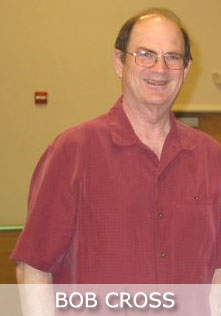 From almost the day I started the program, I have had no chest pain, even with exercise. I am off my cholesterol meds and my “bad” LDL cholesterol has dropped from 212 mg/dL to 60 mg/dL. I am off my blood pressure medications, and today I was 110/75 mmHg. I also stopped my diabetes medications and my last hemoglobin A1c was normal (around 6.0%). I feel WAY BETTER in every way I can think of. But I was nervous about what today’s test would show.
From almost the day I started the program, I have had no chest pain, even with exercise. I am off my cholesterol meds and my “bad” LDL cholesterol has dropped from 212 mg/dL to 60 mg/dL. I am off my blood pressure medications, and today I was 110/75 mmHg. I also stopped my diabetes medications and my last hemoglobin A1c was normal (around 6.0%). I feel WAY BETTER in every way I can think of. But I was nervous about what today’s test would show.
Today, during the radioactive heart scan, I had no pain on the treadmill, even though I took my heart rate to 160 beats per minute, which is over my predicted maximum—and I knew I had more in me. The large deficit that showed last time was completely gone. There was remaining only a small deficit that would now be classified as minor. The doctor would not go so far as to say that the results were normal, but he did say that they were only mildly abnormal. I could see that he was working hard to say that it was not normal—he does not want me to be feeling too confident (don’t worry, I won’t be celebrating with a milk shake). My doctor and I agreed, without question that the reversal was large and obvious, and I am so pleased with that.”
Let’s Begin with A Colossal Example of Spontaneous Healing
As a medical doctor, I (John McDougall) have had a chance to witness the power of spontaneous (self-generated, arising from a natural inclination) healing thousands of times; but nothing has been more impressive than the recovery that follows massive trauma. During my early training years, working at Queen’s Medical Center in Hawaii, a young man mangled in a motorcycle accident arrived through the emergency room doors one evening. His splintered femur bone stuck through the flesh of his left thigh, a 12-inch long gash across his left forearm was streaming bright red blood, and the skin on his left cheek and forehead had been scraped off during his slide across the pavement only minutes before his arrival. X-rays showed his skull was fractured and many ribs were broken. I thought, “How could he ever survive?” Medical intervention was crucial—his bones were straightened and his wounds cleaned and sewn. However, without his body’s innate abilities to repair this massive damage, all would have been lost.
 Moments after his motorcycle accident his body had begun the healing processes. Platelets and blood clotting proteins activated, coagulating his blood and plugging millions of leaking vessels. During the following hours inflammatory cells (commonly called white blood cells) migrated into his open wounds, defending them against infection. Fluids collected within his torn flesh and around the broken bones. The swelling of his thigh, arm, and face would last for weeks. Pain kept him still, preventing movements that could cause further injuries. Soon restoration of the damaged tissues began with the laying down of new structural materials by cells known as fibroblasts in the soft tissues and osteoblasts in the broken bones. Over months replicator cells produced new muscle, skin, bone, and scars, and remodeled his wounds to cause his body to look and function as close to normal as possible.
Moments after his motorcycle accident his body had begun the healing processes. Platelets and blood clotting proteins activated, coagulating his blood and plugging millions of leaking vessels. During the following hours inflammatory cells (commonly called white blood cells) migrated into his open wounds, defending them against infection. Fluids collected within his torn flesh and around the broken bones. The swelling of his thigh, arm, and face would last for weeks. Pain kept him still, preventing movements that could cause further injuries. Soon restoration of the damaged tissues began with the laying down of new structural materials by cells known as fibroblasts in the soft tissues and osteoblasts in the broken bones. Over months replicator cells produced new muscle, skin, bone, and scars, and remodeled his wounds to cause his body to look and function as close to normal as possible.
Within a week he was walking on crutches. Ten days post-accident the stitches were removed from his thigh and arm. The swelling and redness surrounding his wounds took four weeks to fully subside. Six weeks after the accident the coagulated blood (scabs) fell off his face revealing pink skin with new hair follicles filling in his beard. The broken ribs were stable and painless after seven weeks. Three months after this near-death experience he was walking on his own without a limp. Most of the pain was gone, but the memories were fresh. He sold his motorcycle in order to avoid a repeat of this experience.
His transition from broken, bleeding, and dying to health in three months was nothing short of a miracle. I reasoned then, and I know for sure now, that if a body can heal after these kinds of massive injuries, then, given a chance, it can heal from most any illness—even serious chronic illnesses, like heart disease, arthritis, and sometimes cancers, that have plagued my patients for years.
The Secret to Recovery: Stop the Repeated Injuries
The example above was due to a force like a single blast from a sledgehammer; whereas the people I care for, those with chronic disease, can be thought of as suffering from thousands of “micro pinprick” injuries to their arteries, joints, and all other tissues over prolonged periods of time. Even though the force, frequency, and means of impact differ; the mechanisms of repair are still the same, whether the injuries occur once or a million times.
If your health is getting worse it is not because your body is failing you—efforts to heal never stop—not for a moment. The reason for your continued decline is because the damage is ongoing. For disease to progress, injury must outpace healing. Reversing disease is simply a matter of turning this scenario around. To be specific, stop the ongoing injury, which is usually self-induced. (However, there is a point reached where disease is irreversible, because the injury is too severe and/or the body is too worn out to recover. Fortunately, few of my patients are in that much trouble.)
Let’s consider some familiar examples of self-induced injuries and the body’s efforts to heal. A cigarette smoker inhales toxic gaseous particles 20 and more times a day. With each puff, the lungs become more irritated and inflamed. They fight back by coughing and producing mucous in order to remove the poisons. Because of the addictive properties of the tobacco, the injury continues hour after hour, day after day, year after year. Eventually, the some of the red, swollen lung dies and is replaced by non-functioning scar tissues. The result is diminished lung capacity (emphysema). Chronic inflammation can also lay the foundation for lung cancer. Serious lung disease is not inevitable. Many smokers gain wisdom and strength, and are able to quit injuring themselves before the damage is irreversible—the lungs heal and breathing recovers. Toxic damage to the liver by alcohol, and overexposure of the skin to excess sunlight are other everyday examples of chronic injuries due to unwise behaviors. In these cases also, the body responds with efforts to heal, beginning with inflammation. Greater recovery is expected the sooner the repeated injury is stopped.
A Starch-based Diet Supports Spontaneous Healing
Over 75% of the chronic illnesses in developed countries are due to repeated injuries from the fork and spoon. Three and more times a day damaging quantities of fat, protein, cholesterol, and chemicals are ingested at the “dinner table”—better known these days as the “bag of fast food.” The beef, chicken, cheese, refined flours, and sugars are sources of present day malnutrition—excesses and deficiencies of vital nutrients plague these foods.
Replacement with starch corrects the malnutrition with a perfect balance of fats, proteins, carbohydrates, vitamins, minerals, fibers, phytates, and other phytochemicals that support the body’s powers to heal and stay healthy. Rice, corn, potatoes, sweet potatoes, and beans are also devoid of injurious substances: dietary cholesterol, harmful (saturated and trans) fats, chemical toxins, allergy-inducing proteins, and much more.
Blood Tests Show Signs of Inflammation
There is much discussion these days in the scientific journals and the lay press about inflammation, foods, and chronic diseases, especially atherosclerosis, arthritis, and cancer. Populations of people who follow starch-based diets with fruits and vegetables show strong evidence of reduced inflammation in their bodies based on blood tests (C-reactive protein (CRP), interleukin 6, E-selectin, soluble intercellular adhesion molecule 1 (sICAM-1), and soluble vascular cell adhesion molecule 1 (sVCAM-1). These same people also have much less heart disease, arthritis, and cancer than do populations of people who consume diets high in animal (saturated) fats and trans fats. The foods themselves do not directly change these inflammatory markers. The elevations in these blood factors are the body’s response to the injury caused by the foods.
As an example, C-reactive protein (CRP), measured by a blood test, is a very sensitive indicator of inflammation going on anywhere in the body. It is non-specific—in other words, it does not tell you the source of the inflammation—a rise could be from an infection in your toe, arthritis in your knuckles, a bad cold, or the trauma of a motorcycle accident. C-reactive protein provides non-specific information similar to an elevation of the body temperature, called a “fever.” When the walls of your arteries are inflamed during the active phases of atherosclerosis, C-reactive protein rises—predicting a higher future risk of artery failure, commonly known as a heart attack or a stroke.
Spontaneous Healing of Artery Disease
In the case of artery disease, like Robert Cross described above, the meat, poultry, and dairy foods he ate damaged his arteries over six decades. Many mechanisms for these micro pinprick injuries have been described, including free-radical damage from oxidized fat and cholesterol, attacks from the body’s own antibodies, and poisonings from chemicals, like those from tobacco and the environment. The repeated injuries result in sores (think of them as pimples or pustules) covering the inner surfaces of the arteries’ walls. Now that you understand the inflammatory nature of artery disease, you know the reason why a healthier diet, based on plant foods, lowers C-reactive protein levels. This diet stops repeated injuries and allows the sores to heal. You also understand why low-carbohydrate, high-fat diets, like the Atkins diet, increase inflammation as indicated by a rise in C-reactive protein (CRP).
The life-threatening event (a heart attack or a stroke) occurs when one of these pustules ruptures; causing a blood clot to form—occluding the flow of blood to vital tissues, such as the heart or brain.
Common Inflammatory Diseases of Arteries
Macular degeneration
Hearing loss
Strokes
Heart attacks
Aneurysms
Kidney failure
Bowel infarction
Degenerative disks
Claudication (legs)
Gangrene
Impotence
Other infarctions
Spontaneous Healing of Inflammatory Arthritis
“About thirteen years ago, at the age of 46, I (Phyllis Heaphy) began suffering with pain after standing still for long periods of time. Soon thereafter, I began experiencing “traveling” inflammation to various parts of my body: one week it would be in one or two fingers, the next week in one of my wrists, a month later in my shoulder. The turning point was when I spent two days unable to walk—I cried as I tried to make my way across the room. The rheumatologist I visited in September 2000 gave me a diagnosis of mild-to-moderate rheumatoid arthritis (an inflammatory arthritis). It sounded like a death sentence. She prescribed methotrexate, a powerful immune-system-suppressing drug often used to treat cancer. One day I stumbled onto a reference to Dr. McDougall’s ultra-low-fat vegan diet for arthritis. The results were nothing short of miraculous: within a few days of eliminating unhealthy foods I became almost (perhaps 90%) pain-free, and I have continued to improve ever since. Today I remain essentially pain-free and on no medication.”
Unhealthy foods cause the production antibodies that in turn attack the body’s own tissues. These diseases, where the body attacks itself, are referred to as autoimmune diseases. The process is known as molecular mimicry. In Phyllis’s case micro pinprick injuries resulted in hot, swollen, painful joints, a condition properly referred to as inflammatory arthritis. The problem begins with damage to the inside lining of the intestines forming a “leaky gut.” Now foreign proteins, such as cow-milk proteins, can pass into the blood stream. The body makes antibodies to these “invading milk proteins.” Unfortunately, the attack is not isolated to the cows-milk proteins. Proteins of similar structure are also attacked in the person’s joints, causing inflammation with swelling and crippling pain. Changing to a starch-based diet removes the animal proteins from the intestines immediately, and eventually heals the leaky gut. Inflammation begins to subside in four to seven days. Within four months over 70% of patients with inflammatory arthritis are dramatically improved or cured.
Common Autoimmune Diseases
Rheumatoid arthritis
Lupus
Psoriatic arthritis
Ankylosing spondylitis
Pernicious Anemia
Type-1 diabetes
Thyroiditis (most hypothyroidism)
Vitiligo
Ulcerative Colitis
Crohn’s Disease
Multiple Sclerosis
Uveitis
Polymyositis
Dermatomyositis
Scleroderma
Spontaneous Healing of Cancer
“For all my 47 years, I (Ruth Heidrich) thought I was extremely healthy! After all, at that time (1982), I’d been a daily runner for 14 years, had run 3 marathons, and ate what I considered a very healthy diet—lots of chicken, fish, and low-fat dairy. Little did I know there was an insidious cancer growing in my right breast. When it grew to the size of a golf ball, I was rushed into surgery. I was then told it was invasive cancer, and later, that it had spread, not only throughout the whole breast but also involved my bones and one lung. While recovering from the surgery I saw a newspaper item asking for volunteers for a breast cancer/diet research study. I volunteered and was soon convinced that Dr. McDougall was on the right track and left his office on a low-fat vegan diet. Since my diagnosis in 1982, I have completed the Ironman 6 times, run 67 marathons, won over 1000 racing trophies, and been declared One of the Ten Fittest Women in North America” in 1999. I have a Fitness Age of 32 although chronologically am 74!”
Cancers are initiated and promoted by unhealthy components of the high-meat Western diet. Vegetarians are generally much healthier with lower cancer rates than others living in the same communities. As discussed, repeated injuries from unhealthy foods are followed by inflammation. Chronic inflammation is implicated in all stages of cancer—initiation, promotion and progression. The relationship is best seen in chronic inflammatory diseases; including ulcerative colitis, gastritis, pancreatitis, prostatitis, endometriosis, thyroiditis, bronchitis, mastitis (milk ducts), and microbial infections, which are often complicated by cancers in their respective organs. Many mechanisms for the micro pinprick injuries that initiate and promote cancer have been described, including injuries from radiation, and poisonings from chemicals found in tobacco products and foods. Even though doctors and patients commonly believe otherwise, in the case of cancer the body does not abandon its whole body efforts for spontaneous healing.
Cancers, even when spread throughout the body, can be reversed as seen in the case of Ruth Heidrich. A recent review reported 32 cases of complete remission from metastatic breast cancer. Under the microscope, evidence of ongoing spontaneous healing in colonies of breast cancer cells is clearly observed. Inflammation results in the destruction of these aberrant cells and their replacement with scar tissue. A recent study of women published in the Archives of Internal Medicine found that about 22% of mammography-detected invasive breast cancers underwent spontaneous remission—in other words, are healed—over a six-year period of study. Advanced prostate, colon, melanoma, brain cancer (neuroblastoma), and kidney cancer have also been reported to spontaneously disappear without treatment. Precancerous changes in the female uterine cervix and colon polyps also regress. The benefits of a healthy diet were not directly tested during any of these observations. Common sense and available research says that better nourished, healthier people are more likely to be cured by spontaneous healing.
Reported Spontaneous Regressions (Healing) of Common Cancers
Breast
Prostate
Colon
Brain
Kidney
Melanoma
The Solution to Chronic Disease Is Simple and Easy To Explain
Stop the repeated injuries. Identifying the sources of these injuries is easy. Unhealthy foods, and “bad habits” (smoking, coffee, alcohol, etc.), have been known since antiquity to be at the root of human maladies. The real challenge is in changing lifelong behaviors. This change begins by telling a simple truth. The Starch Solution takes one giant step forward for health and healing. Expect dramatic results from your new diet. You won’t be disappointed.
References:
1) Nettleton JA, Steffen LM, Mayer-Davis EJ, Jenny NS, Jiang R, Herrington DM, Jacobs DR Jr. Dietary patterns are associated with biochemical markers of inflammation and endothelial activation in the Multi-Ethnic Study of Atherosclerosis (MESA). Am J Clin Nutr. 2006 Jun;83(6):1369-79.
2) Esposito K, Marfella R, Ciotola M, Di Palo C, Giugliano F, Giugliano G, D’Armiento M, D’Andrea F, Giugliano D. Effect of a mediterranean-style diet on endothelial dysfunction and markers of vascular inflammation in the metabolic syndrome: a randomized trial. JAMA. 2004 Sep 22;292(12):1440-6.
3) Giugliano D, Ceriello A, Esposito K. The effects of diet on inflammation: emphasis on the metabolic syndrome. J Am Coll Cardiol. 2006 Aug 15;48(4):677-85
4) Lopez-Garcia E, Schulze MB, Fung TT, Meigs JB, Rifai N, Manson JE, Hu FB. Major dietary patterns are related to plasma concentrations of markers of inflammation and endothelial dysfunction. Am J Clin Nutr. 2004 Oct;80(4):1029-35.
5) Baer DJ, Judd JT, Clevidence BA, Tracy RP. Dietary fatty acids affect plasma markers of inflammation in healthy men fed controlled diets: a randomized crossover study. Am J Clin Nutr. 2004 Jun;79(6):969-73.
6) Lopez-Garcia E, Schulze MB, Meigs JB, Manson JE, Rifai N, Stampfer MJ, Willett WC, Hu FB. Consumption of trans fatty acids is related to plasma biomarkers of inflammation and endothelial dysfunction. J Nutr. 2005 Mar;135(3):562-6.
7) Calabré P, Golia E, Yeh ET. CRP and the risk of atherosclerotic events. Semin Immunopathol. 2009 May 5.
8) Bonomini F, Tengattini S, Fabiano A, Bianchi R, Rezzani R. Atherosclerosis and oxidative stress. Histol Histopathol. 2008 Mar;23(3):381-90.
9) Muscari A, Puddu GM, Bozzoli C, Volta U, Sangiorgi Z, Bianchi FB, Descovich GC, Puddu P. Serum IgA antibodies to apoproteins and milk-proteins in severe atherosclerosis. Ann Ital Med Int. 1992 Jan-Mar;7(1):7-12.
10) O’Toole TE, Conklin DJ, Bhatnagar A. Environmental risk factors for heart disease. Rev Environ Health. 2008 Jul-Sep;23(3):167-202.
11) King DE, Egan BM, Geesey ME. Relation of dietary fat and fiber to elevation of C-reactive protein. Am J Cardiol. 2003 Dec 1;92(11):1335-9.
12) Chen CW, Lin YL, Lin TK, Lin CT, Chen BC, Lin CL. Total cardiovascular risk profile of Taiwanese vegetarians. Eur J Clin Nutr. 2008 Jan;62(1):138-44.
13) Ma Y, Griffith JA, Chasan-Taber L, Olendzki BC, Jackson E, Stanek EJ 3rd, Li W, Pagoto SL, Hafner AR, Ockene IS. Association between dietary fiber and serum C-reactive protein. Am J Clin Nutr. 2006 Apr;83(4):760-6.
14) Rankin JW, Turpyn AD. Low carbohydrate, high fat diet increases C-reactive protein during weight loss. J Am Coll Nutr. 2007 Apr;26(2):163-9.
15) Shah PK. Inflammation and plaque vulnerability. Cardiovasc Drugs Ther. 2009 Feb;23(1):31-40.
16) Leech S. Molecular mimicry in autoimmune disease. Arch Dis Child. 1998 Nov;79(5):448-51.
17) Pérez-Maceda B, López-Bote JP, Langa C, Bernabeu C. Antibodies to dietary antigens in rheumatoid arthritis–possible molecular mimicry mechanism. Clin Chim Acta. 1991 Dec 16;203(2-3):153-65.
18) McDougall J. Diet: Only Hope for Arthritis. https://www.drmcdougall.com/med_hot_arthritis_diet.html
19) Sinha R, Cross AJ, Graubard BI, Leitzmann MF, Schatzkin A. Meat intake and mortality: a prospective study of over half a million people. Arch Intern Med. 2009 Mar 23;169(6):562-71.
20) Fraser GE. Vegetarian diets: what do we know of their effects on common chronic diseases? Am J Clin Nutr. 2009 May;89(5):1607S-1612S.
21) Kundu JK, Surh YJ. Inflammation: gearing the journey to cancer. Mutat Res. 2008 Jul-Aug;659(1-2):15-30.
22) Larsen SU, Rose C. Spontaneous remission of breast cancer. A literature review. Ugeskr Laeger. 1999 Jun 28;161(26):4001-4.
23) Horii R, Akiyama F, Kasumi F, Koike M, Sakamoto G. Spontaneous “healing” of breast cancer. Breast Cancer. 2005;12(2):140-4.
24) Zahl PH, Maehlen J, Welch HG. The natural history of invasive breast cancers detected by screening mammography. Arch Intern Med. 2008 Nov 24;168(21):2311-6.
25) Kellen E, Vansant G, Christiaens MR, Neven P, Van Limbergen E. Lifestyle changes and breast cancer prognosis: a review. Breast Cancer Res Treat. 2009 Mar;114(1):13-22.
Recommended Articles

Medical Board of California Misses an Opportunity to Protect Healthcare Consumers
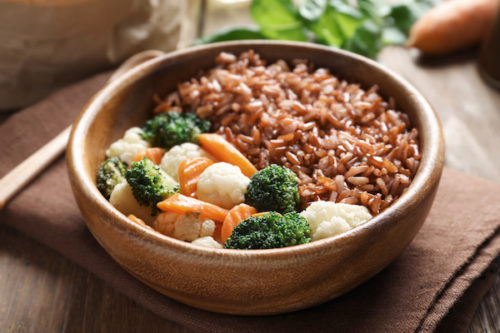
Making the Change to a Healthy Lifestyle Work, Part 3 - Cooking Techniques
